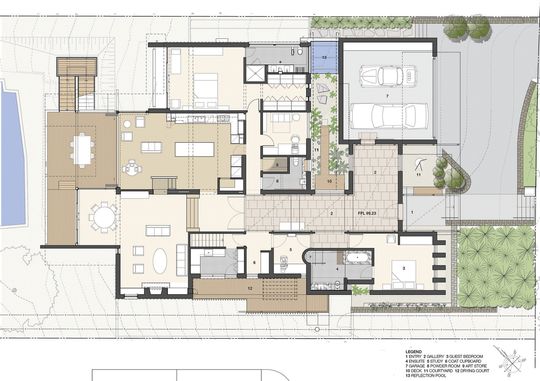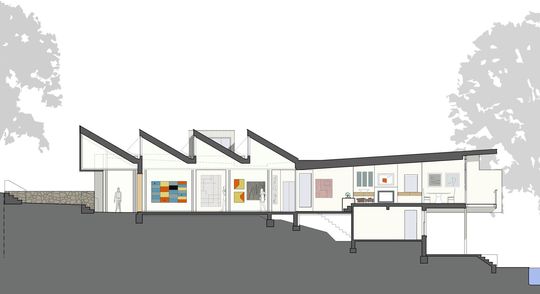In the 1960s, in between all the swinging and liberating, Architect Rudi Krastins designed a simple house on a steeply sloping site in the recently established Canberra suburb of Red Hill. Forty years later, Townsend + Associates Architects (T+AA) were asked to redesign the existing building into a gracious new home perfectly suited for modern living.
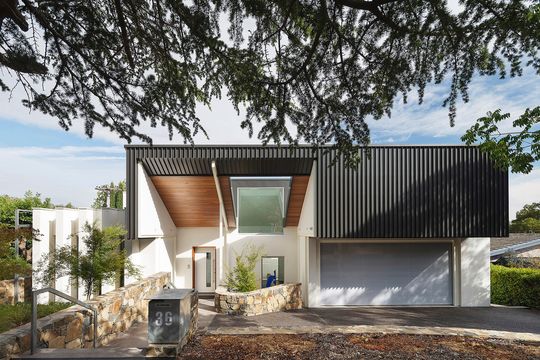
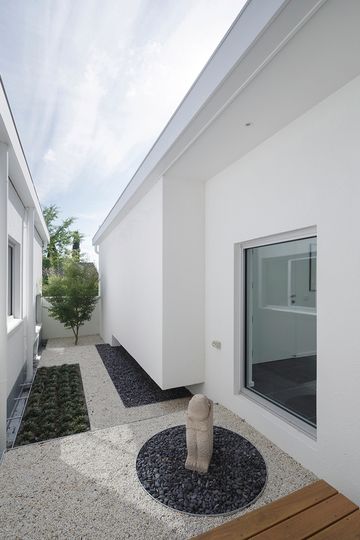
That initial brief would take 14 years to realise — just a little longer than the average renovation(!). But don't worry, the owners weren't surrounded by brick dust and a trowel of tradies* for the better half of two decades — the project was completed over two stages. The design uses masonry, timber, glass and steel to reimagine the original home and to highlight an outstanding outlook over the axes of central Canberra.
* Can you tell I just invented that collective noun?
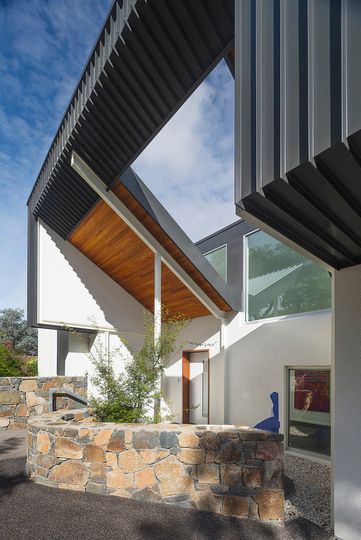

Stage One tackled the rear of the home opening it up to the outdoors with new, modern living and entertainment spaces, kitchen, bedrooms and bathrooms. These spaces flow seamlessly from indoors to outdoors. Expansive elevated decks are connected to a lower pool level by a steel and timber stair. Steel is used to achieve large spans and cantilevers. It also helps to express the new structural of the house, bringing an expressive clarity to the extension.
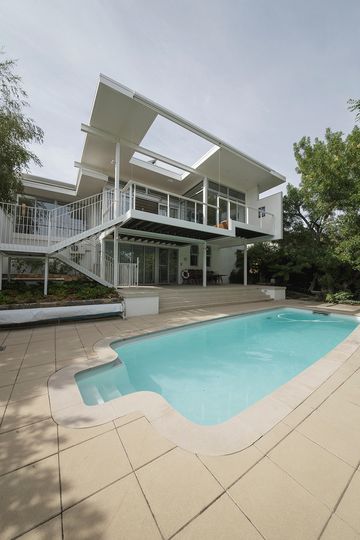
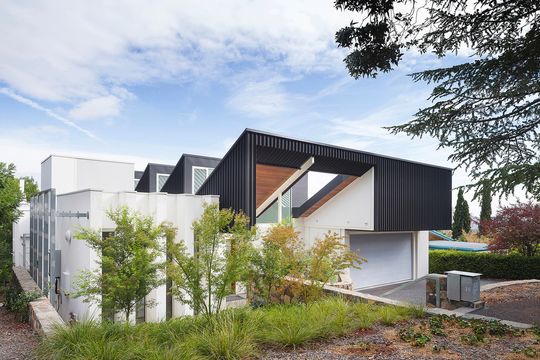
The Stage Two brief transformed the street side of the home, consisting of a new entry and gallery, guest suite, courtyard, study, garage and landscaping. It was desired that the house exhibit a generous and animated form to the street. The gallery links the two stages. The gallery area has an expansive south facing saw-tooth roof which brings glorious diffuse light and ventilation deep into the interior.
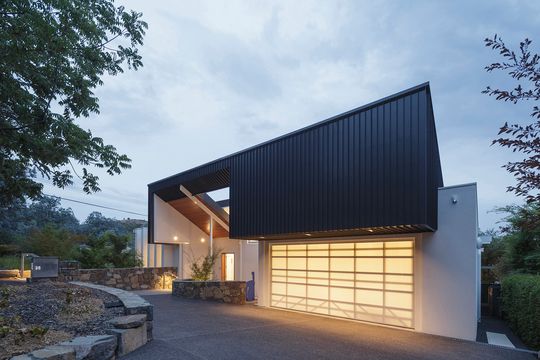
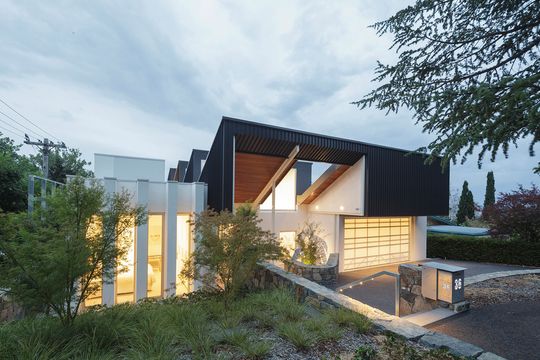
The new roof forms are exaggerated in height to compensate for the house being set down from street level and to screen the large original roof. The new street elevation is scaled to provide a well-proportioned street presence and explores the juxtapositions of light and dark, solid and void. The warm tones of the brushbox soffit act as a lantern to the street and continues the use of this signature material throughout the house.
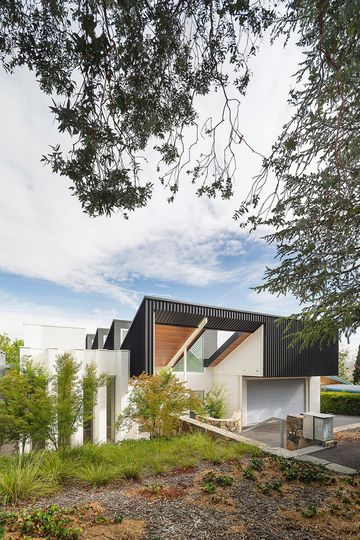
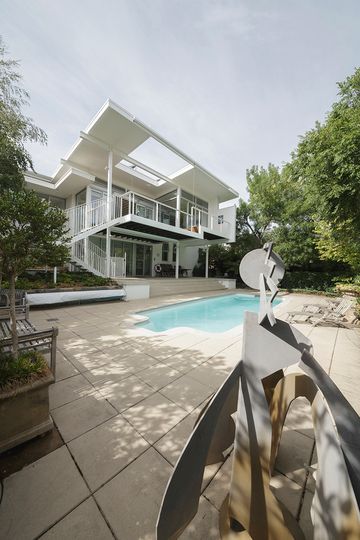
Gallery walls and ceilings are detailed to minimise shadows and to disperse the soft south light. The repeated roof lights are supported on slender steelwork, forward of the rendered gallery walls. The steel columns frame the openings and define the display walls. The 'slippage' between roof forms and the supporting steelwork has a dynamic effect on the space.
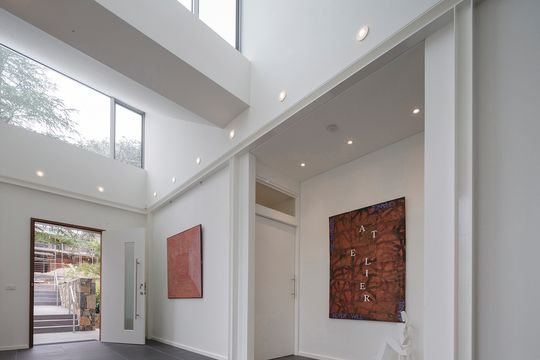
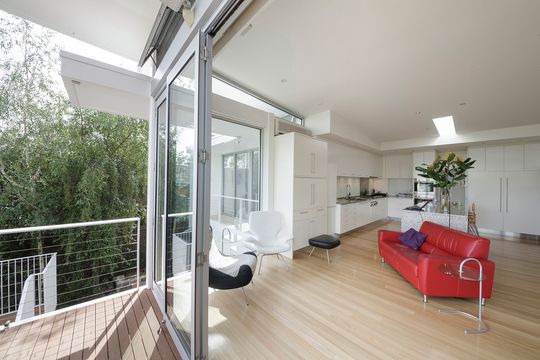
The steel is also used as part of an innovative art hanging method utilising Rare Earth magnets to provide total flexibility for the 'hang' without having to patch walls. Lighting is all low energy and the gallery is lit through a continuous frieze of LED wall fittings that flood the spaces with even ambient light.
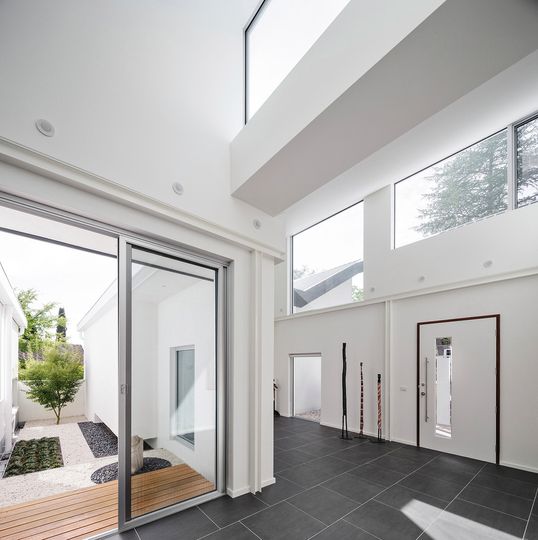

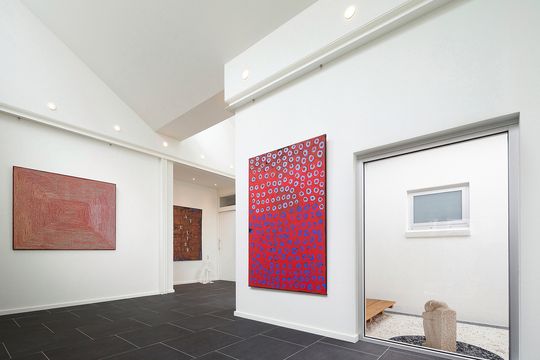
The revamp also includes a series of environmentally sustainable design initiatives:
- Double brick construction with rigid, foil backed insulation fixed in the centre of a wide cavity and isolating the outer brick skin from the interior skin. This allows the thermal mass of the interior brick skin to be available to moderate internal temperature fluctuations.
- The concrete floor slabs are insulated around the perimeter and edges and incorporates gas-fired cast-in hydronic heating.
- All window and door glazing is sealed-unit double glazed.
- Natural cross ventilation is promoted through high level remote controlled awnings and the linear courtyard.
- Highly insulated roofs and upper walls.
- Roof water harvesting and storage for garden watering and swimming pool top-up.
- Solar hot water heater with gas-fired booster.
- Re-use of as much as possible of the original house fabric and structure to respect and utilise the embodied energy in these elements.
- Provision of roof mounted 2.4 kw PV array.
- Energy efficient lights.
